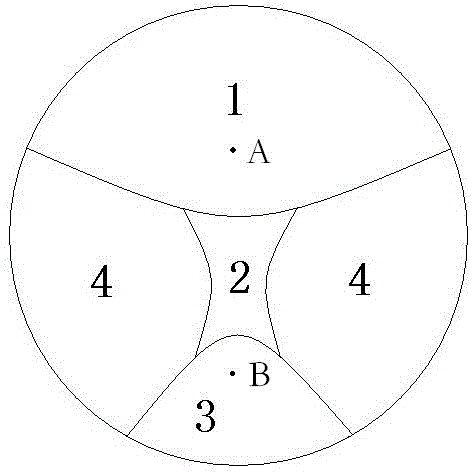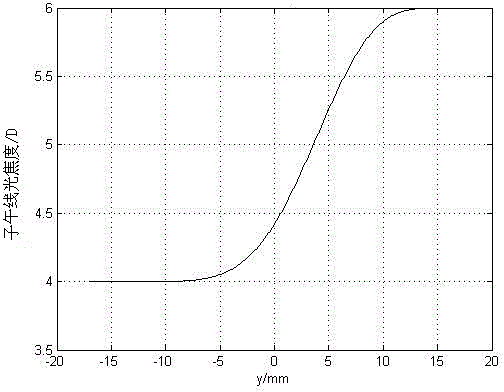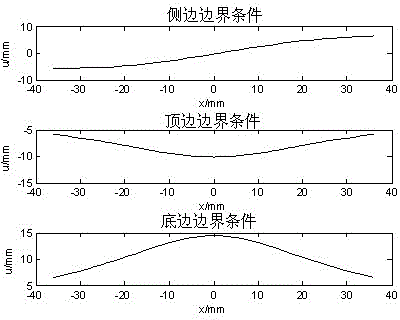Progressive addition lens with fixed channel length
A progressive multi-focal and channel technology, applied in the field of progressive multi-focal ophthalmic lenses, can solve the problems that the clear vision area cannot penetrate the far vision area, frequent head movement, and affect the comfort of the lens wearer.
- Summary
- Abstract
- Description
- Claims
- Application Information
AI Technical Summary
Problems solved by technology
Method used
Image
Examples
Embodiment 1
[0063] In this embodiment, the lens radius of the lens to be processed is R=36mm, the optical power in the far area is 4 diopters, the near optical power is 6 diopters, and the lens power plus the amount of light is 1.0, 1.5, 2.0, 2.5 , 3.0 and 3.5 diopters. Set the distance between the reference point A of the far vision zone and the reference point of the near vision zone h=34 mm, and the distance L=17mm from A to the lens center point O. The refractive index of the lens material is 1.523.
[0064] 1. Set point A The lowest order of the first non-zero derivative m=9 at the point B The lowest order of the first non-zero derivative at l=6, which is obtained by (3):
[0065] ,
[0066] .
[0067] Then formula (1) becomes
[0068] ,
[0069] Solve equation (2), , , , , , , The other coefficients are zero. The change function of the refractive power on the meridian of the lens is
[0070] .
[0071] See attached figure 2 , It is the meridian power M(u) distribution diagram ...
PUM
 Login to View More
Login to View More Abstract
Description
Claims
Application Information
 Login to View More
Login to View More - R&D
- Intellectual Property
- Life Sciences
- Materials
- Tech Scout
- Unparalleled Data Quality
- Higher Quality Content
- 60% Fewer Hallucinations
Browse by: Latest US Patents, China's latest patents, Technical Efficacy Thesaurus, Application Domain, Technology Topic, Popular Technical Reports.
© 2025 PatSnap. All rights reserved.Legal|Privacy policy|Modern Slavery Act Transparency Statement|Sitemap|About US| Contact US: help@patsnap.com



